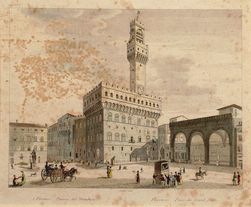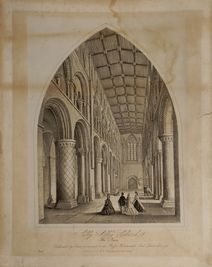 The gremlins in Joe Dante’s 1984 film Gremlins aren’t actually gremlins – at least to begin with – they’re mogwais. Mogwais are happy little furry creatures and they’ll stay that way provided three simple rules are followed. When looking after mogwais, it is vital that:
The regulations that govern the care of mogwais are simple and relatively straightforward (what ‘after midnight’ means is anyone’s guess) and they can be applied equally to the care of watercolours, drawings, etchings and engravings. In fact, the ‘mogwai rules’ are a useful primer when considering the mounting, framing and display of any work on paper. If you overly expose your watercolours to bright light (direct sunlight, for instance) they might react in a mogwailian fashion and fade away, over time, like a well-intentioned diet in the middle of January. Once-sharp colours can lose lustre and definition may blur. Naturally, we wouldn’t choose to get a paper-based artwork wet - that would ruin it. But moisture (due to an overly humid environment, for example) can be just as damaging. The picture on the right has been subjected to overly moist environment and is showing evidence of foxing as a result. And feeding? In addition to the moisture we unwittingly feed them we are also apt to expose our pictures to a varied diet of changing temperatures; hot, cold and all points in between. The very best place to display a work on paper is in a stable environment with a temperature of between 16°and 19°C and a relative humidity level between 45%-60% (source: Conservation Register, www.conservationregister.com). This is the ideal. It is also known as a museum. Museums have thermometers and hygrometers to measure ambient conditions and thermostats and humidifiers to maintain an optimum environment. Museum conditions are the gold standard but we, of course, don’t live in museums. We live in houses where we like to take steamy baths and showers; we might also, from time to time, have mist-emitting pans of vegetables bubbling away in our kitchens. In the winter, we like to have the central heating on in the morning, turn it off when we go to work and turn it back on again in the evening. Thus we live in occasionally humid environments with large variances in temperature. In terms of paper-based art, our homes are not stable environments. Does this mean we can’t own watercolours? No, of course not. For thousands of years, we humans have sought to decorate and embellish the spaces we choose to occupy – it is an innate human instinct (you can satisfy your own innate human instinct by visiting our ‘Watercolours’ section here). Happily, there are tools at our disposal that help us limit any potential risks to art – namely knowledge and choice.  We now know more about how to conserve and care for the works we own. The picture on the left shows a print that was mounted in the late 19th or early 20th century. The mount boards from that period were made of acidic wood pulp and we can clearly see how this has ‘burnt’ the paper. Today, acid-free mount boards are readily available (The Saturday Gallery only uses conservation-grade board for the works we mount in-house) and additional protection is provided once works are framed and appropriately sealed to the reverse. In terms of choice, we can decide where best to hang a particular work. For watercolours, drawing and prints, opposite a south-facing window may not be such a good idea. Similarly, you might want to reconsider if you decide that the best place for a fine watercolour is above the bath tub.
Thanks to the work of conservators we know what harms works on paper and we have a better understanding of what we can do to reduce the potential risks to them. So next time you are deciding how to mount and frame a piece or considering where to hang it, remember it’s not just a watercolour or a drawing or a print – it’s also a mogwai. And you wouldn’t want it to turn into a gremlin. Next time: Oil Paintings and Ewoks: Just Good Friends or Something More Serious? Comments are closed.
|

 RSS Feed
RSS Feed